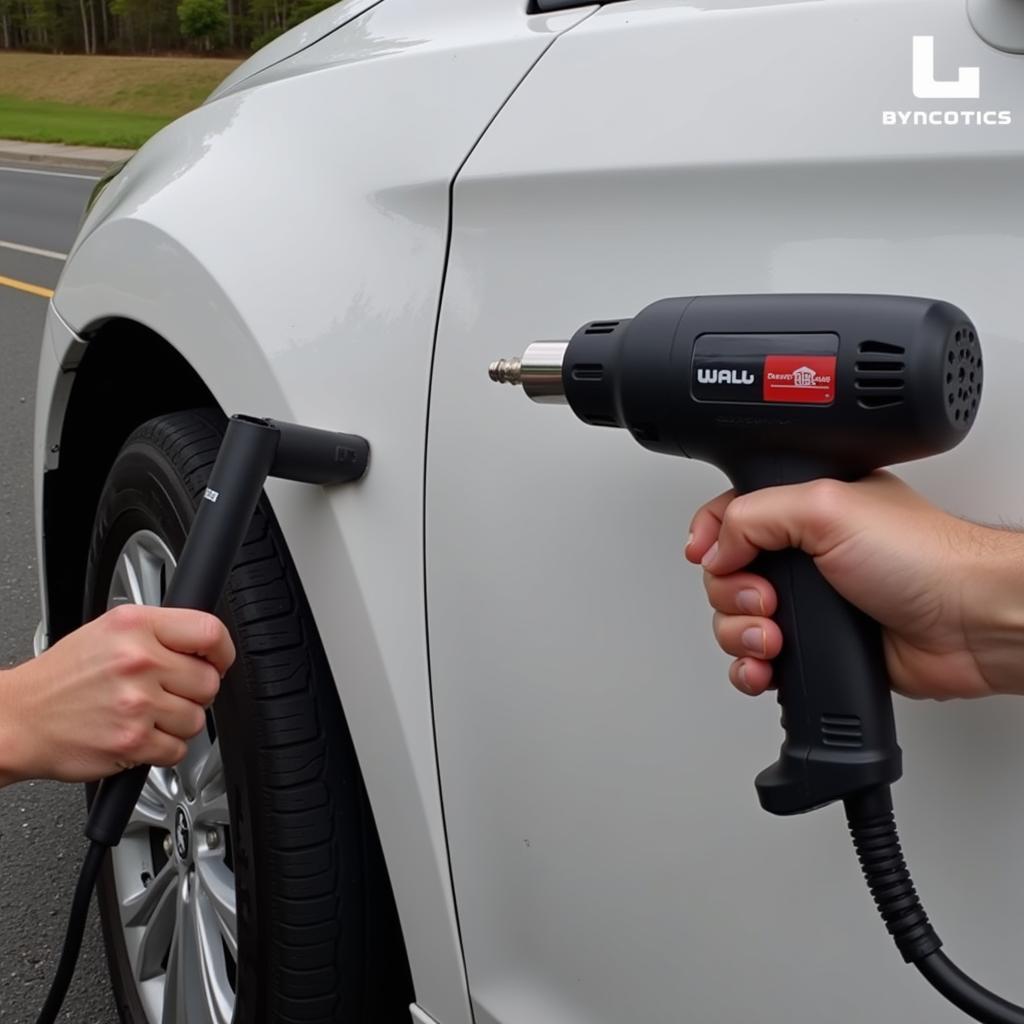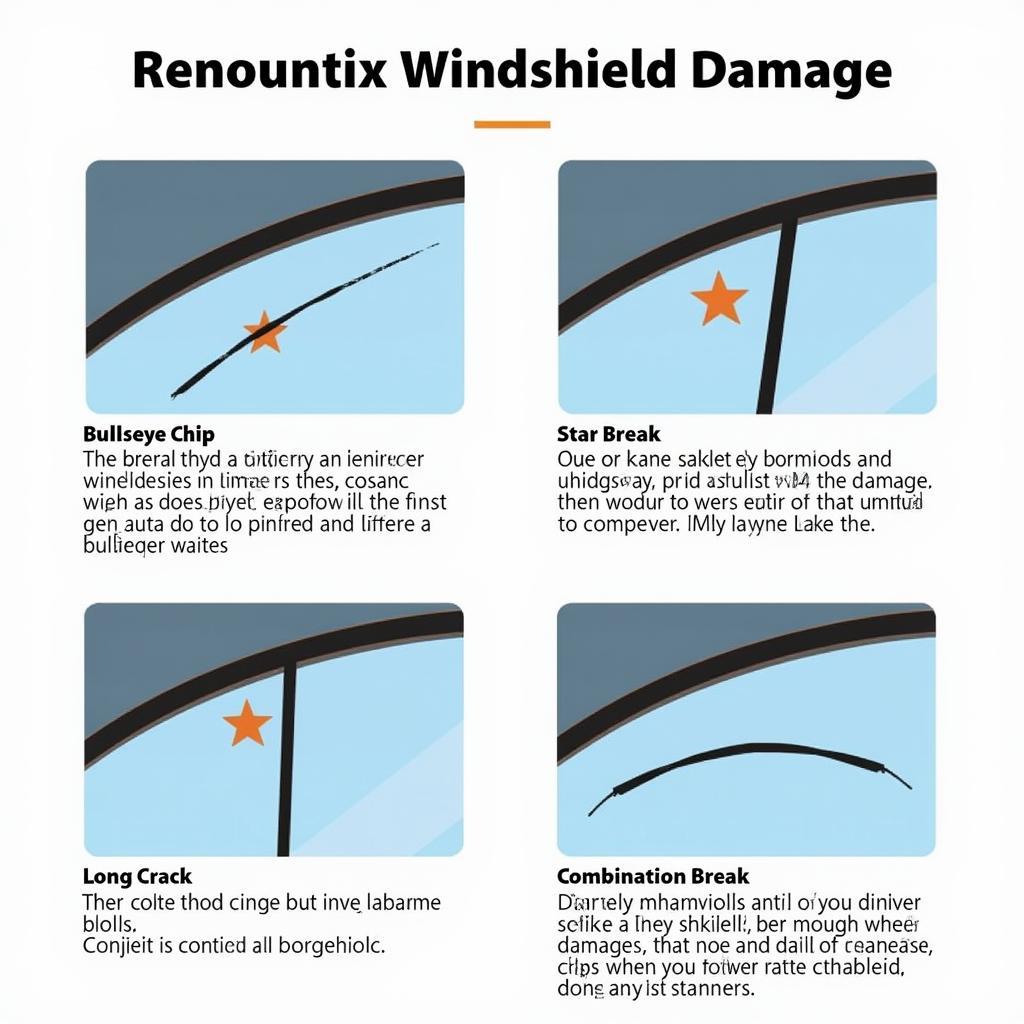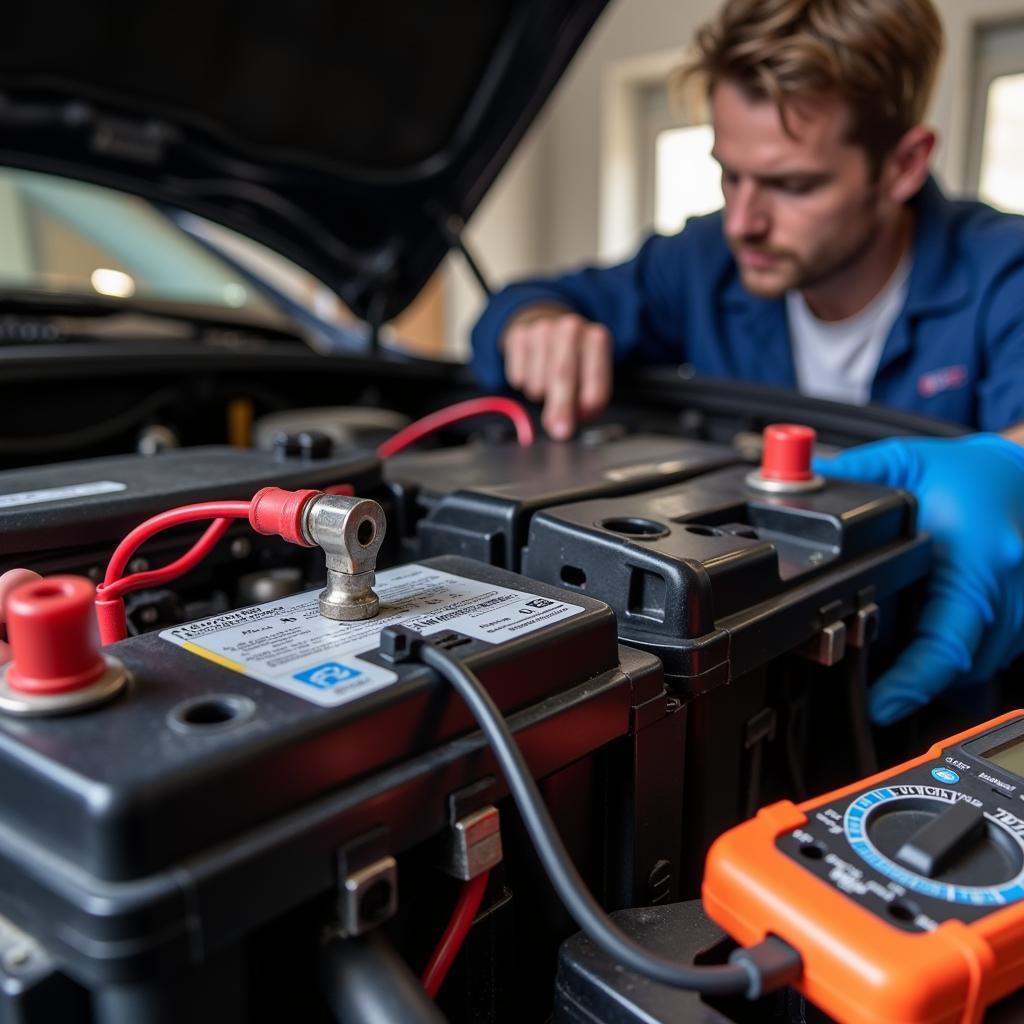Fixing dings on a plastic car bumper is a common DIY project. This guide provides expert advice and practical steps for repairing those unsightly blemishes, from minor scuffs to more substantial dents, restoring your bumper to its former glory. Whether you’re a seasoned mechanic or a weekend warrior, you’ll find valuable insights and techniques to tackle this task effectively.
Understanding Bumper Damage and Repair Options
Before diving into the repair process, it’s essential to assess the extent of the damage. Minor scuffs and scratches can often be addressed with simple polishing or touch-up paint. However, deeper dings and dents may require more advanced techniques like heat application or filling. Identifying the type of plastic your bumper is made from (typically polypropylene or thermoplastic olefin) is also crucial, as this dictates the appropriate repair materials and methods.
Identifying the Type of Plastic
Knowing the plastic type helps determine the best repair approach. A simple test involves heating a metal object and touching it to an inconspicuous area of the bumper. If the plastic softens readily, it’s likely thermoplastic olefin (TPO). If it requires more heat and produces a slightly different smell, it’s probably polypropylene (PP). Using compatible repair materials is key for a successful and long-lasting fix.
Fixing Minor Scuffs and Scratches
Minor imperfections can often be remedied with polishing compounds or touch-up paint. For light scratches, start with a mild abrasive polish and gradually work your way up to finer grades until the scratch disappears. If the scratch has penetrated the paint, applying touch-up paint is necessary. Ensure a precise color match and apply thin coats, allowing each layer to dry completely before applying the next.
Touch-up Paint Application Techniques
For a seamless finish when applying touch-up paint, consider using a fine-tipped brush or a touch-up pen. Start by cleaning the area thoroughly and applying the paint in thin, even coats. Allow each coat to dry completely before applying the next. Once the paint has dried, you can gently sand and polish the area to blend it with the surrounding paintwork.
Repairing Deeper Dings and Dents
For more substantial damage, heat application and/or filling might be required. Using a heat gun or hairdryer, carefully apply heat to the dented area, gently pushing the dent from the inside while the plastic is pliable. For deep dings, a plastic filler might be necessary. Ensure the filler is compatible with your bumper’s plastic type and follow the manufacturer’s instructions carefully.
Using a Heat Gun for Dent Removal
When using a heat gun, be cautious not to overheat the plastic, which can cause warping or discoloration. Work in small sections, applying heat evenly and gradually. While the plastic is warm and pliable, gently push the dent from the inside, reshaping it to its original form.
“Patience is key when working with heat,” says John Smith, Automotive Repair Specialist at Smith Auto Solutions. “Take your time and avoid applying excessive heat, as this can lead to further damage.”
 Using a Heat Gun to Remove Dents from a Car Bumper
Using a Heat Gun to Remove Dents from a Car Bumper
Finishing Touches
After repairing the dings, sanding and repainting the affected area might be necessary to achieve a seamless finish. This ensures that the repaired area blends seamlessly with the surrounding bumper and restores its original appearance.
“A professional-looking repair requires attention to detail,” advises Sarah Jones, Senior Technician at Jones Auto Care. “Proper sanding and repainting are essential for achieving a flawless result.”
Conclusion
Fixing dings on a plastic car bumper can be a satisfying DIY project with the right knowledge and tools. By following the steps outlined in this guide, you can address various types of bumper damage and restore your car’s appearance. For more personalized advice or assistance with your specific car repair needs, feel free to contact AutoTipPro at +1 (641) 206-8880 or visit our office at 500 N St Mary’s St, San Antonio, TX 78205, United States.
“Remember, addressing minor damage promptly can prevent it from becoming a more significant and costly issue down the line,” adds Michael Brown, Lead Mechanic at Brown Automotive.






Leave a Reply